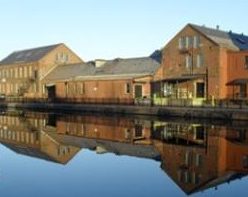Mayo Family Story
The Mayo family of Chicopee Massachusetts comes from both Quebec and English lines. They can be divided into the four grandparents – Mayo, Hamel, Walpole, and Blazer. Solyme Mailloux entered into Chittenden County of Vermont in about 1810. Like many that came from Quebec into northern Vermont, he changed his last name to fit into the society. This was not done among the Quebec of southern New England. Only a small number of Quebec immigrants went into any given Vermont town and they needed to fit in. All his children had an American name including one of his sons William Mayhew. Even this was not enough and when William had children in the era from 1850 to 1870, he named them differently too with one of his sons being John Henry Mayo. Thus the transformation was complete. Farming was getting tough in northern Vermont so John Mayo moved his family to Granby Massachusetts in 1910. Then in 1925 his son Charles would marry a Holyoke native.
Firmin Hamel was one of the first Quebec settlers of the new city of Holyoke. He first came to Holyoke in 1860 but quickly noted that he had a knack for getting others to immigrate to Holyoke. He was hired to do just that. He would every year travel back to Quebec to encourage more settlers to come to the new industrial city. Of his many children there was one Telesphore that selected to be a dairy farmer in western Holyoke. His sons likewise worked on the farm and likewise married other Quebec immigrants. His son George a milkman married Rosalie Goyette in 1898. Longevity is a trait in the Hamel family of Holyoke especially among the woman. Many would live past 90 years old. George and Rosalie had one daughter Loretta that lived to 100 years old. She had outlived her husband Charles Mayo by 34 years.

John Walpole in the early 1800s moved to Hellesdon of Norfolk County England. Like in America the industrial revolution forced workers from the farms to the small towns near streams and then into the large mill cities. His grandson William would marry a city-dweller in 1875 and become a servant – a very desirable job for the lower class. His own son William would be a French polisher in Norwich and would own a small business doing that. This is a trade that treats fine wood until it acquires a high luster. By then they were well established in Norwich. The last of the Walpole line Arthur would marry a Blazer in 1930.
In 1800, Norwich was the 2nd largest city in England. All cities have poverty and Norwich just as London had a lot of poor. Bernard and Anne Deary perhaps tried to raise their children well. To lift oneself from poverty is very hard. Their daughter Sophia was a charwoman her entire life. This is the equivalent of a housekeeper. Such woman of the lowest economic class found it too hard to marry due to lack of interest from the men. Still she became the mother to five children without ever marrying – that is, they were born out of wedlock. This was very common in the 1800s in England. Poor houses were common in this period – recall the stories of Charles Dickens. Sophia’s children would also struggle. Her daughter Susan would do the same – work as a charwoman and raise four children herself out of wedlock. One of the daughters of Susan – Alice Deary – would marry James Blazer in 1888 in Norwich. James was a night watchman. He had enough of a salary from that to raise a strong family. Their daughter Gladys Blazer married the above Arthur Walpole. In turn their daughter would marry into the Mayo family of America. Via doing genealogy one can see the development of society from very hard times to prosperous times. These Mayo and Walpole families are no exception.
